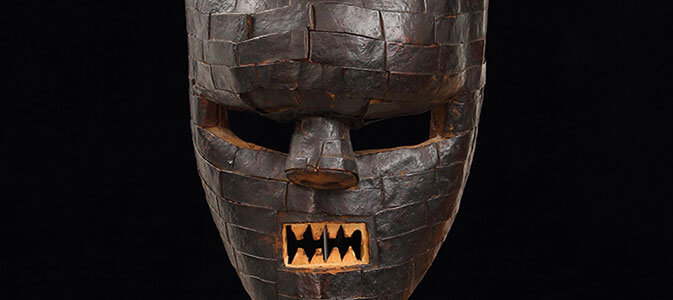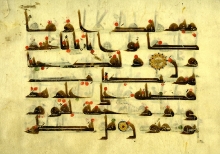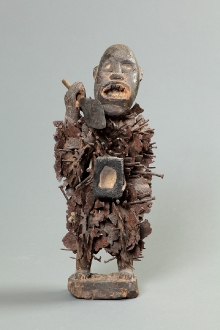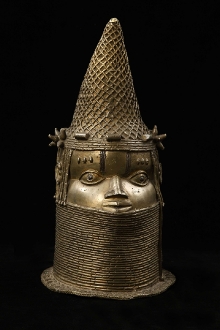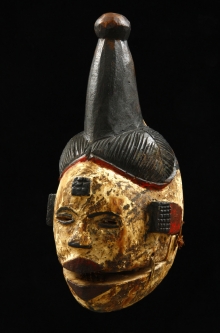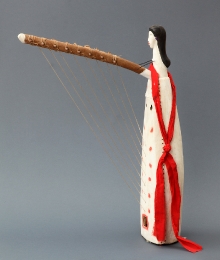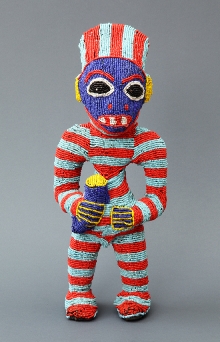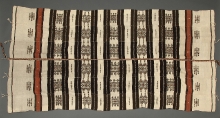The African collection of Non-European Cultures Department of the National Museum in Szczecin is one of the greatest in Poland. It consists of ca. 8 thousand ethnographical objects and ca. 25 thousand archaeological relics.
The ethnographical collection came to existence mainly on account of field research conducted since 1960s by the museum in cooperation with employees and students of the universities in Poznań, Warsaw and Wrocław. The participants used their own means of transport (mainly trucks), therefore it was easier not only to travel in the bush, but also to obtain objects in the field and to transport them to Poland. The research usually used to have stationary character. Several-week-long stays in one region made it possible not only to learn the local culture, but also to obtain rich collections of unique exhibitis.
Research expeditions made it possible to gather great monographical collections, cross-sectionally illustrating cultures of the following societies: Dogon in Mali, Kirdi-Daba in Cameroon, Nuba-Moro in Sudan, Somba in Benin, Lobi in Burkina Faso, Gagou in Ivory Coast or Malinke in Guinea. The collections include numerous objects, among others: weapons, clothes, clay vessels, baskets, woven mats, farming and craft tools, jewellery, musical instruments, objects related to magic and religion – all, that illustrates the character of examined societies. Objects, which enable to observe the whole technological processes (like production of clay vessels or woven baskets), have also been collected.
Beside great monographical collections related to farming peoples, the Museum owes the ones that illustrate everyday lives of herdspeople and nomads: Shenabla and Baggara from Sudan (long and broad wool blankets used for covering tents, large family boats, saddlebag shelves, a varied collection of saddlebags), Tuareg (leather tent with full equipment, camel saddles, clothes, jewellery and more) and Peul-Bororo (complete homespun and leather costumes).
An interesting point are also thematic collections, especially those related to boatbuilding and fishing (dugout boats from Western Africa and the area of Gulf of Guinea, fishing equipment: fishing traps of various types, fish and prawn drying baskets, paddles), smithery (numerous tools and smithery wares from Western Africa), pottery (a collection of ca. 650 clay vessels) and art collections (from terracotta statuettes made in the areas on the Niger River between the 14th and the 16th centuries or a bronze head from the Kingdom of Benin from the 18th century, through stone sculptures from Democratic Republic of the Congo and from Guinea, to an impressive collection of figural arts and masks from Western and Central Africa).
In years 2007–2011 the Museum obtained great, amounting to over 1200 objects, collection of African art gathered through decades by Oleńka and Denis Gordier-Nidzgorski – experts on African puppetry. Among this collection, there are over 500 African dolls and puppets. These puppets, set in motion, “come to life” during African ceremonies and shows. The collection is considerably varied not only by origin (Mali, Niger, Nigeria, Ivory Coast, Togo, Ghana, Benin, Democratic Republic of the Congo, West Congo, Gabon, Cameroon, Tanzania, Rwanda, Tunisia, Senegal, Burkina Faso, Madagascar, Angola, South Africa), but also by the role they played in African societies, material they were made of or the ways of their manipulation.
The archaeological collections were obtained on account of surface excavations in Algeria, Mali, Morocco, Tunisia and Nigeria. They are mainly fragments of ceramics, stone and flint tools, stems, swarves, ostrich egg shells etc.
- Manuskrypt sury Koranu, Afryka Północna lub Bliski Wschód, IX-X w., pergamin, atrament, 21 x 31 cm, fot. G. Solecki, A. Piętak
- Author: No Data
- Nkisi nkondi - fetysz gwoździowy, Bakongo, Demokratyczna Republika Konga, 2. połowa XX w., drewno, gwoździe i ostrza żelazne, szkło, 53,5 x 24 x 18 cm, fot. G. Solecki, A. Piętak
- Author: No Data
- Głowa Królowej Matki (Iyoby), Edo, Królestwo Beninu (obecnie Nigeria), XVIII-XIX w., brąz (odlew na wosk tracony), 45 x 23,6 x 26 cm, fot. G. Solecki, A. Piętak
- Author: No Data
- Maska słonia (mwaash a mboy), Bakuba, Demokratyczna Republika Konga, 2. połowa XX w., drewno, juta, rafia, szkło, muszle kauri, wys. 39,5 cm, fot. G. Solecki, A. Piętak
- Author: No Data
- Przodek zwycięski - lalka stowarzyszenia Ekon, Ibibio, Nigeria, poł. XX w., drewno polichromowane, dzianina, gwóźdź, wys. 35 cm (całość z uchwytem: 88 cm), fot. G. Solecki, A. Piętak
- Author: No Data
- „Nienasycony żebrak” - nagłownik, Ejagham, Nigeria, połowa XX w., drewno, skóra, sznurek, wys. 25 cm, fot. G. Solecki, A. Piętak
- Author: No Data
- Przodek - założyciel wioski, Idoma, Nigeria, 1. połowa XX w., drewno polichromowane, włókno roślinne, 30,5 x 14,4 x 13,8 cm, fot. G. Solecki, A. Piętak
- Author: No Data
- Maska kasangu stowarzyszenia Mugongo, Salampasu, Demokratyczna Republika Konga, połowa XX w., drewno, włókno roślinne, blacha, 24,9 (z brodą 48,2) x 20 x 19,5 cm, fot. G. Solecki, A. Piętak
- Author: No Data
- Harfa ngombi, Fang, Gabon, 2. połowa XX w., drewno rzeźbione polichromowane, sznurek, tkanina, żyłka, metal, gwoździe, wys. 57 cm, fot. G. Solecki, A. Piętak
- Author: No Data
- Rzeźba przedstawiająca strażnika królewskiego, Bamileke, Kamerun, 2. połowa XX w., drewno, tkanina, koraliki, gwoździe, 45 x 17,5 x 12 cm, fot. G. Solecki, A. Piętak
- Author: No Data
